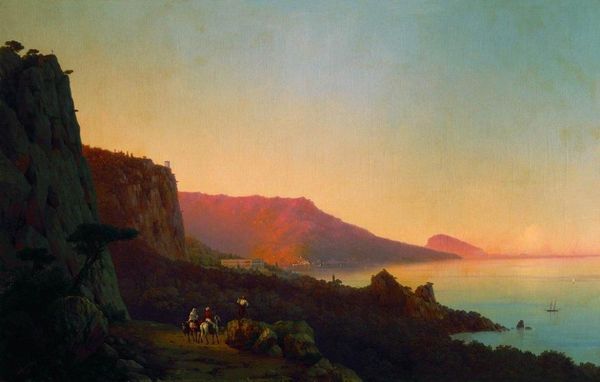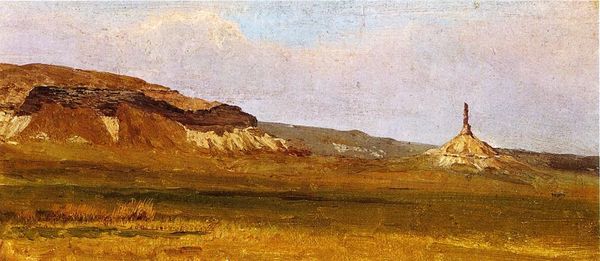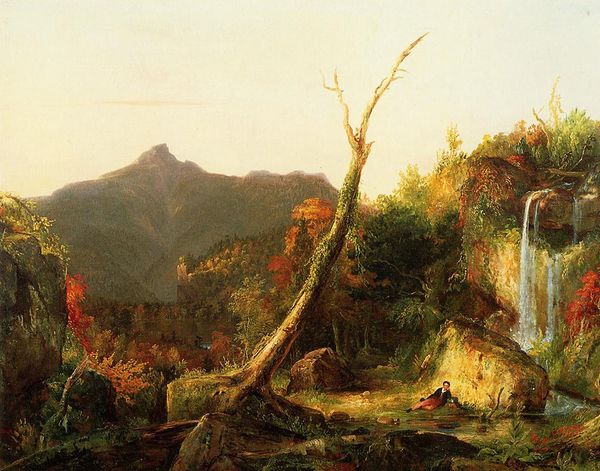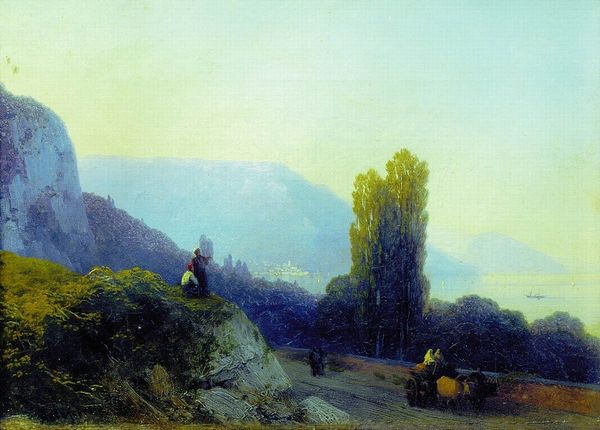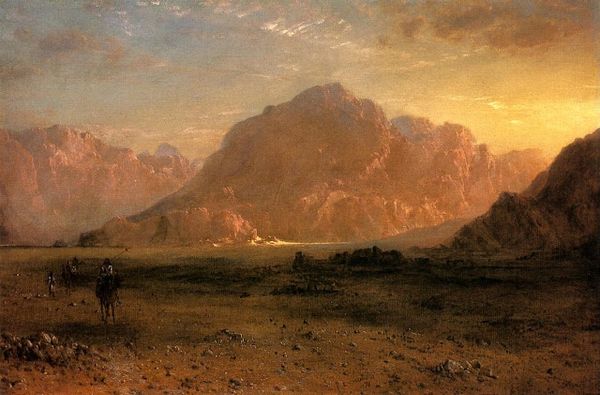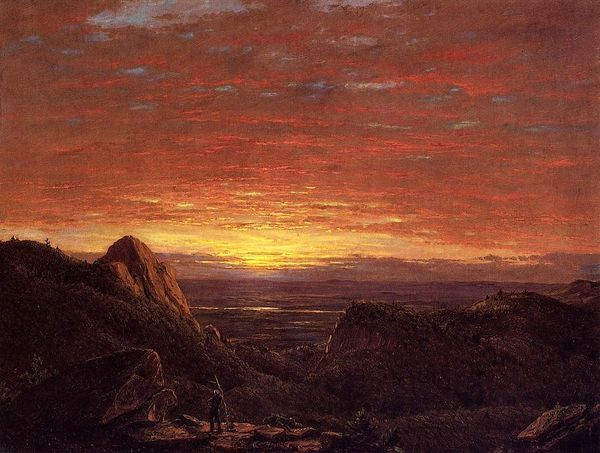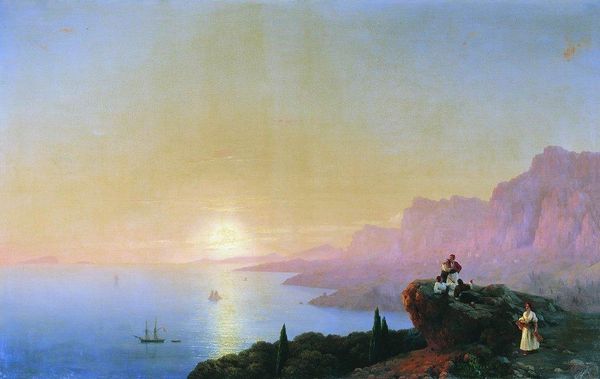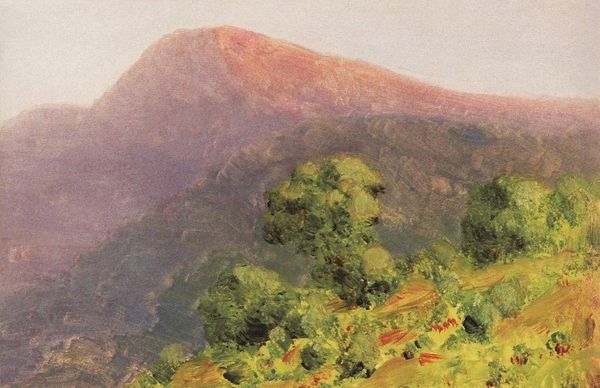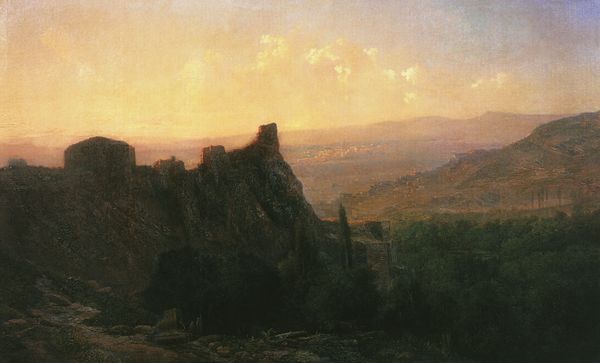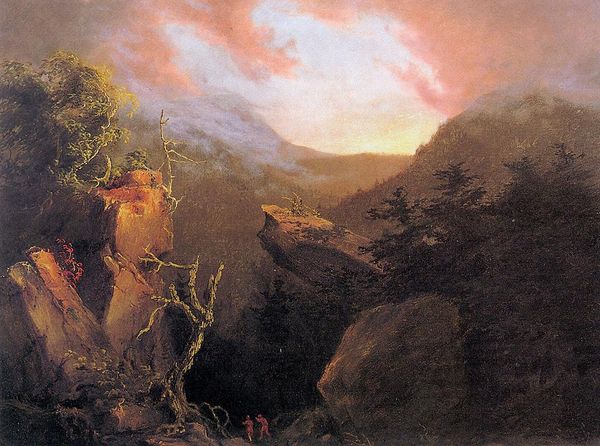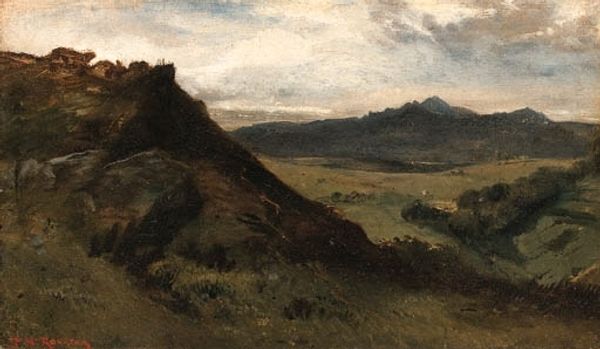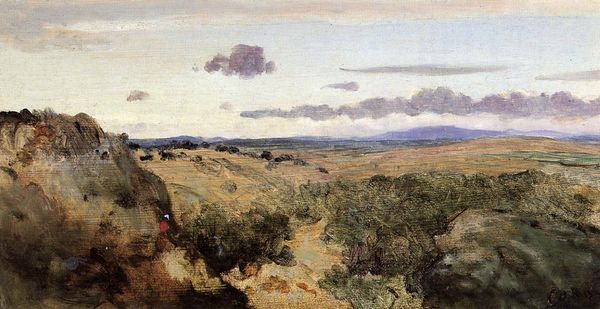
Copyright: Public domain
Curator: This painting is “Seashore,” created in 1887 by Arkhyp Kuindzhi. It's an oil on canvas work done in the Impressionistic style. Editor: From this high vantage, the scene evokes a serene detachment, a feeling heightened by the blurring of boundaries between sea and sky. There’s almost no visual resistance. Curator: Kuindzhi's engagement with Impressionism here is filtered through a Romantic sensibility, evident in his sublime treatment of nature, which emphasizes dramatic light and atmospheric perspective to create depth. He clearly captures light in plein-air as part of his broader interest to render realism, a movement gaining momentum throughout the later 19th century. Editor: True, the diffuse light is the dominant element, softening every edge. Note how the high vantage point denies any single point of focus, almost dissolving traditional compositional hierarchies, giving way to this tonal range that captures a transient atmospheric moment. The muted palette does remind me more of the aesthetics of romanticism though. Curator: We must also consider Kuindzhi’s cultural context. As a painter associated with the Peredvizhniki movement, the painting carries political implications. Remember their commitment to depicting the lives and landscapes of Russia, moving away from academic, westernized traditions. It is interesting that this choice comes through a formal embrace of some impressionist tenants, blurring clear boundaries of landscape, art historical moments, and geopolitical boundaries. Editor: But there's also his individual vision. There's this play of the macro and the micro as we’re standing on what seems to be this high mountainous landscape, a kind of personal vision or meditation of space, given what you are saying. I agree there’s a sense of place rooted in cultural identity as his unique mark. Curator: Perhaps the real power here resides in the negotiation between artistic innovation, cultural context, and individual expression. It's these tensions that render "Seashore" more than just a pretty landscape, and it offers, in turn, much more to the art historian than one may assume. Editor: Exactly, I see this painting now with much more curiosity thanks to understanding the historical background behind Kuindzhi’s experiment in representing "Seashore" by considering his formal arrangement and brush strokes.
Comments
No comments
Be the first to comment and join the conversation on the ultimate creative platform.

